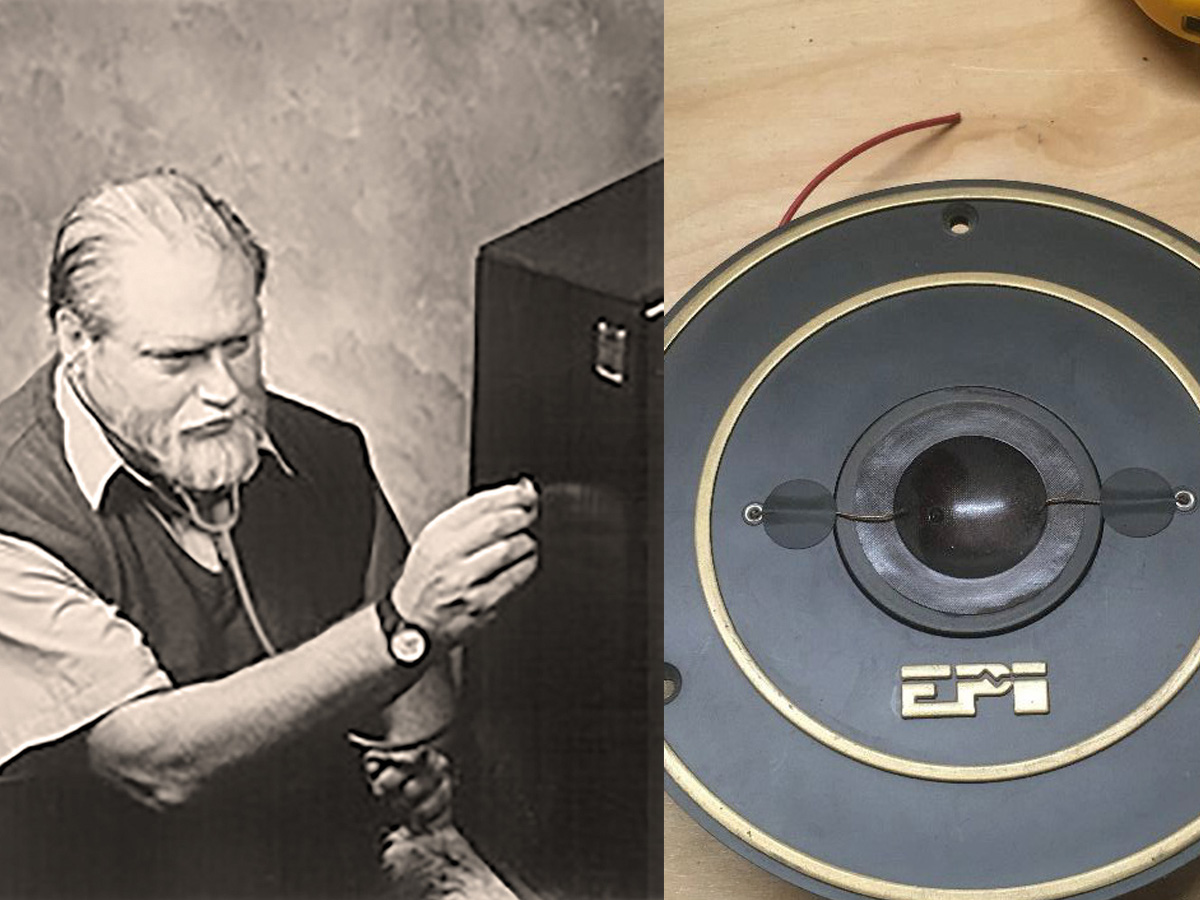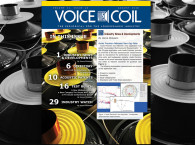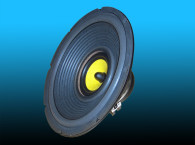In this article series about speaker parts we now explore the tweeter, a class of transducers designed to reproduce the upper range of audio frequencies. In the previous article we covered a bit of tweeter history, discussed the cone tweeter, and introduced the common dome tweeter. In this article, we will explore dome tweeter variations and introduce the balanced drive tweeter.
Dome Tweeter Dispersion
Dome tweeters generally have better dispersion than cone tweeters, but many factors come into play. Even dome tweeters have many variations including: soft and hard domes, back chambers, phase plugs, voice coil attachment (at the peripheral or modally driven), and magnetic structure topology.
First, let’s explore the speaker diaphragms' “effective radiating area” and how this consideration impacts the dispersion of tweeter cones and domes.
Simply measuring the tweeter diaphragm’s diameter often does not directly correlate to the transducer’s dispersion. When a tweeter’s diaphragm works as a perfectly rigid piston, the theoretical would more closely track the reality. But, this is not always the case.
The designer can intentionally try to stiffen the diaphragm assembly to increase its piston characteristics or intentionally design for the decoupling and flexing of the diaphragm. Soft dome tweeters are designed to blow with the breeze, while metal dome tweeters stand tall and stiff in the storm. In the case of hard domes, there are many ways to stiffen the diaphragm.
The diameter can be reduced, but this complicates many other design aspects. In general, smaller dome tweeters provide wider sound dispersion at the highest frequencies. However, smaller dome tweeters have less radiating area, which limits their output at the lower end of their range.


They also have smaller voice coils, which limit their overall power output. Another way to increase stiffness is to have the diaphragm with a deeper contour (e.g., a deeper dome or cone). As with anything else, too much will get you into trouble. A higher Young’s modulus (stiffness) of diaphragm material can be selected. It is possible to switch from a polyester like Mylar (a molten polyethylene terephthalate or PET) to a higher stiffness polyester like Teonex (a polyethylene naphthenate or PEN). In the case of hard domes, you can switch from aluminum to titanium.
The topology of the voice coil-to-dome attachment can also be changed (e.g., a modally driven voice coil). Many inverted dome tweeters have used modal drive, which is where the voice coil is attached at the diaphragm’s half diameter. By driving the dome where its first break-up mode is physically located (halfway up the diaphragm), you can shift the break-up frequency up an octave. This is especially practical for inverted dome tweeters (see Figure 1).

Inverted Dome Tweeters
Winslow Burhoe invented the inverted dome tweeter (see Photo 1). In this design, the dome is suspended at its edge but driven by a smaller diameter voice coil (see Photo 2). Regular dome tweeters are suspended at the edge and have the voice coil attached at the edge. Burhoe introduced the inverted dome tweeter when he launched Epicure (also known as EPI) in 1970. Epicure designed and sold many successful designs. In the 1990s it became one of the Harman brands.
I had the privilege of meeting and talking with Burhoe, an industry icon, at an informal Association of Loudspeaker Manufacturing and Acoustics (ALMA) meeting in the Boston, MA, area last summer. He is still designing and building audiophile speakers under the Direct Acoustics brand name. In addition to Epicure, other brands have used inverted domes with modal drives, including Genesis Physics in the 1980s and later Focal’s famous beryllium inverted dome tweeters that are still highly regarded today.

Jacques Mahul, founder of JMLab and Focal, made the following points during an interview with Jonathan Scull, in the April 1998 issue of Stereophile: "With an inverted dome, you have the coil in the middle of the dome diameter. The mechanical coupling is better. Consider that the coil of a [positive] dome tweeter is attached tangentially — it’s outside, on the circumference. As a result, you have no angle created between the coil and the “base” of the hemisphere — they lie in the same plane. In this way, you actually lose a significant amount of energy."
With the inverted dome (i.e., the coil in the center) there is an angle created between the dome and the coil. The voice coil is fixed at mid-height on the dome and uniformly moves the cone’s entire surface. The energy transfer is more efficient, so you lose only perhaps 45% or 50% of the energy between the coil and the dome. This is important, as it helps bring out all the micro-information and inner detail contained in the musical source. Sometimes the tweeter’s size does not reflect the dispersion.
Curlinear Decoupling
One particularly well-engineered approach is to have a larger diaphragm with a small, effective radiating area (e.g., the innovative Allison tweeter, which is shown in Photo 3).

"The midrange unit has a straight-sided cone with a flexible polyethylene edge suspension. It has extremely wide and uniform dispersion over its operating range, as does the tweeter. Neither is proprietary inasmuch as they’re not protected by patents, but they are difficult and time-consuming to make properly, and they do project relatively far out from the front cabinet panel, which complicates the grille design. They have not been imitated, probably for those reasons.”
The idea is the flexing (squeezing) of the outer part of the diaphragm provides the decoupling reducing the effective radiating area, which provides improved power response in the driver’s upper range.

Phase Plug
The phase plug is a small orifice suspended over the tweeter dome often found in hard-dome tweeters (see Photo 4). The wavelengths of the last octave or so of the top-end response are smaller than the diaphragm (if you optimistically assume piston motion). So, the phase plug’s purpose is to equalize the path length to the sound energy’s listener from the diaphragm’s center and sides. For example, in compression drivers, the phase plug optimizes phase coherence and extends (peaks) the frequency response at the treble’s very top end.
Back chambers
Except for dipole tweeters (e.g., some ribbons and electrostatics) most tweeters have a rear chamber (i.e., captive air volume behind the diaphragm). Typically, it consists of the volume behind the dome and the magnetic structure’s inner cavities. Sometimes felt or other acoustically absorbent material is placed behind the dome to absorb reflections from the magnetic structure bouncing back through the dome (see Photo 5).

Balanced Drive
Balanced drive is essentially derived from a combination of the common microspeaker, the cone tweeter, and the headphone driver, which is sometimes described as the donut with a dome. Basically, the diaphragm has a center dome with the voice coil directly behind it and a cone shape that joins the diaphragm to the frame. Usually, the cone acts as part of the radiator and part of the suspension. Early versions tended to have a separate dust cap and some of them had spiders.

Audax (France) and Foster (Japan) were early evangelists of this design, followed by many Taiwanese and, later, Chinese vendors. Balanced drive tweeters are also popular in autosound coaxial speakers as the design is robust and can be easily paired with small woofers (see Photo 6). aX
This article was originally published in audioXpress, February 2013.






